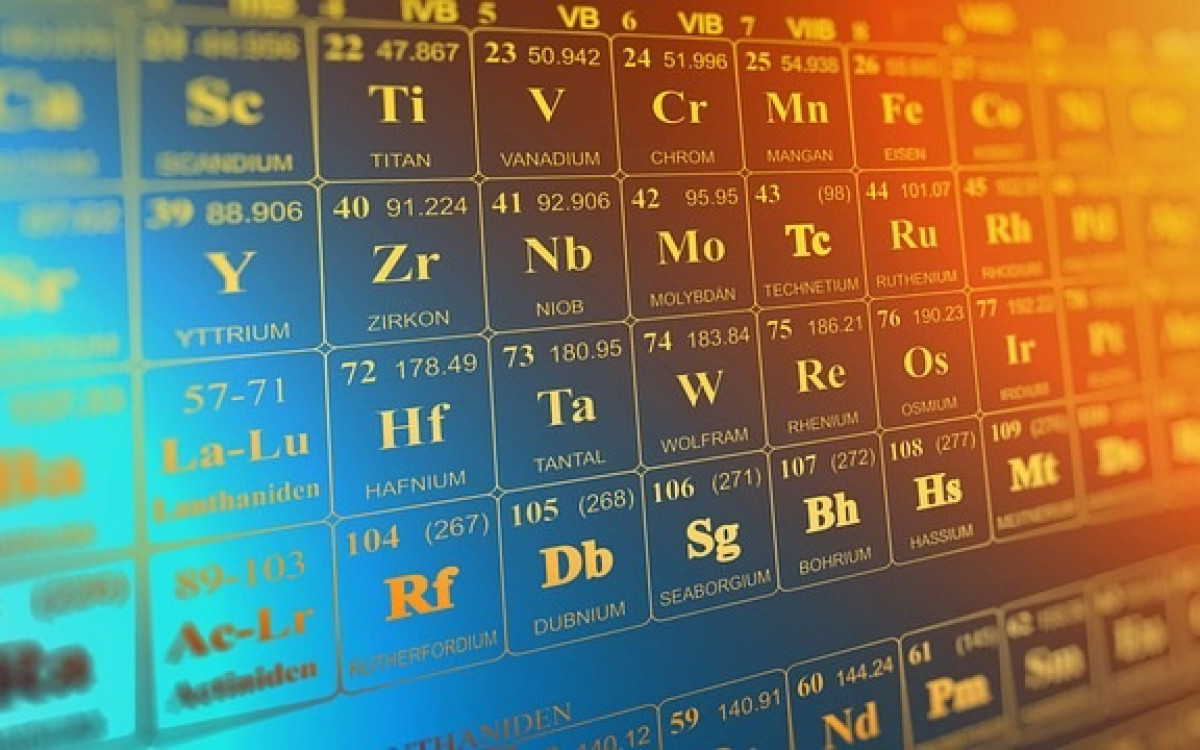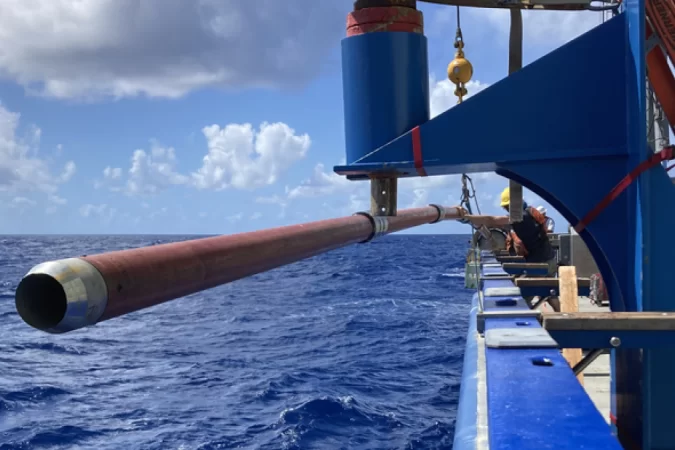| Credit: Photo by Paul Walchuck, Oregon State University |
A team of scientists, engineers and the crew of the research vessel Neil Armstrong, operated by the Woods Hole Oceanographic Institution (WHOI), collected a sample of cylindrical sediments from the deepest part of the Puerto Rico Trench. The core sample sets records as the deepest ever collected in the Atlantic, and possibly the deepest core ever collected in any ocean.
A 38-foot cylindrical sediment sample from the deepest part of the Puerto Rico Trench is approximately 5 miles below the surface. The collection took place on a cooperative cruise in Puerto Rico, between February and March 2022.
Tall sediment samples are usually collected by allowing a central tube, with a lead weight on top, to fall into the water and transform into fine sediment that accumulates on the sea floor over long periods of time. When the tube is pulled from the sea floor and returned to the ship, the sediments retrieved inland can be used to study Earth’s environmental and climatic conditions dating back tens, hundreds of thousands, or even millions of years.
Through the research, scientists are interested in understanding the genetic characteristics that allow microorganisms to survive within deep-sea sediments. The main objective of this expedition is to better understand how microbes at different depths on the sea floor adapt to the different environmental conditions found in the trench depths ranges.
Over three weeks at sea, the team collected cores from a water depth of about 50 meters (165 feet) to a maximum trench depth of about 8,385 meters (27,510 feet).
“We took these cores to see how the microbes that live under the sea floor respond to pressure,” said Professor Stephen de Hondt. “Our ultimate goal is to improve understanding of how organisms in extreme environments interact with the world around them.”
Core collections are made possible thanks to the long platform originally developed at Woods Hole Oceanographic Institution in 2007 by specialist Jim Broda for retired research vessel Knorr. The system was then adapted to the shorter Neil Armstrong bowl used in the research.
The group of researchers was led by Professor Dr. Stephen de Hondt and Dr. Robert Buchalny of the University of Rhode Island Graduate School of Oceanography and included researchers and technicians from the Institute of Global Health, University of Rhode Island, University of California San Diego, Oregon State University, University of Washington, University of Puerto Rico Mayaguez, and the University of Munich.

“Hardcore beer fanatic. Falls down a lot. Professional coffee fan. Music ninja.”







More Stories
Are you addicted to memes? Understand how “Brainrot” can steal your attention and harm your life.
Scientists pave the way for the emergence of a new element in the periodic table | World and Science
Science Backs Yoga’s Benefits for Women Who Want to Live Longer